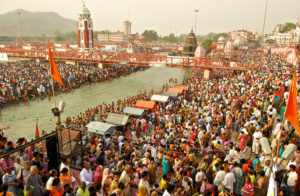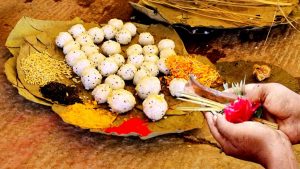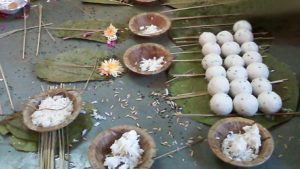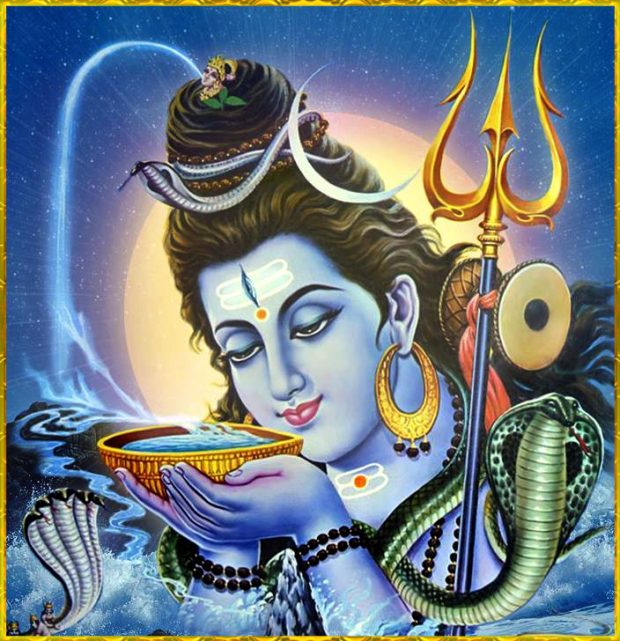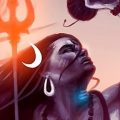Origin of Shivratri
Origin of Shivratri
According to Mythology, during the event of churning the ocean (Samudra Manthan), a pot of deadly poison is said to have emerged from the ocean. The gods and the demons were terrified, as this poison could destroy the entire world. They rushed to Lord Shiva for helping them from this critical situation. In order to save life on this world, the benevolent Lord is believed to have drunk the deadly poison but had held it in his throat, without swallowing it. This turned his throat blue and thus he came to be called as ‘Neelkanda’ which is derived from Sanskrit words ‘Neel’ – referring to the colour blue and ‘kand’- denoting neck. There are other reasons to celebrate Mahashivratri.
Thus Shivratri is celebrated marking this event by which Lord Shiva saved this world from annihilation.
A Festival Significant for Women
Shivratri is considered auspicious for everyone, even so for women. Married women worship Lord Shiva on this day for the well-being of their husbands and sons, while unmarried women pray for being blessed with an ideal husband like Lord Shiva, the spouse of Devi Parvati.
It is generally believed that anyone who utters the divine names of Lord Shiva during his auspicious night of Shivratri with complete devotion is freed from all sins. Not only that, but they also are said to reach the heavenly abode of Lord Shiva and thereby attain salvation.
Shiva Rituals
On the day of Shivratri, a three-tiered platform is built using bricks around a fire. The topmost part represents the ‘swargaloka’ or the heaven, the middle one ‘antarikshaloka’ denotes the space and the bottom one represents ‘bhuloka’, or the earth. Eleven ‘kalash,’ or urns, are kept over the ‘swargaloka’ plank which symbolises the 11 manifestations of the ‘Rudra’ or Lord Shiva. These kalashas are decorated with ‘bilva’ leaves or ‘bael’ (Aegle marmelos. Mango leaves are also placed on top of a coconut representing the head of Shiva. The uncut shank of the coconut symbolises his tangled hair and the three spots on the coconut shell denote Lord Shiva’s three eyes.
Bathing the Phallus
The linga, which is a phallus, is the symbol representation of Shiva. It is usually made of granite, soapstone, quartz, marble or metal. Surrounding the Phallus Linga is the ‘yoni’ (vagina) as its base. This Yoni-Linga is the symbolical representation of the union of Shiva and Shakthi. Devotees circumambulate the sacred Shiva lingam and offer prayer to the Lord, the entire night. The holy linga is bathed every three hours with the five sacred offerings of a cow, called the ‘panchagavya’–milk, buttermilk, urine, butter and dung. Then the five foods of immortality–milk, clarified butter, curd, honey and sugar are placed before the lingam. Datura fruit and flowers which are despite considered poisonous are believed to be sacred to Shiva and are thus offered to him.
“Om Namah Shivaya!”
The devotees observe a strict fast the entire day and chant the sacred Panchakshara mantra “Om Namah Shivaya”. They also offer flowers and incense to the Lord amidst ringing of temple bells. They maintain long vigils during the night, staying awake and listening to puranic stories, hymns and songs. The fast ends only the following morning, after the nightlong worship of the deity. The festival of Maha Shivratri is celebrated in Kashmir for 15 days. The 13th day is observed as a day of fast followed by a family feast.
The Mahashivratri vrat and other rituals in another post
Reach us to be a part of our whatsapp spiritual reminder group
